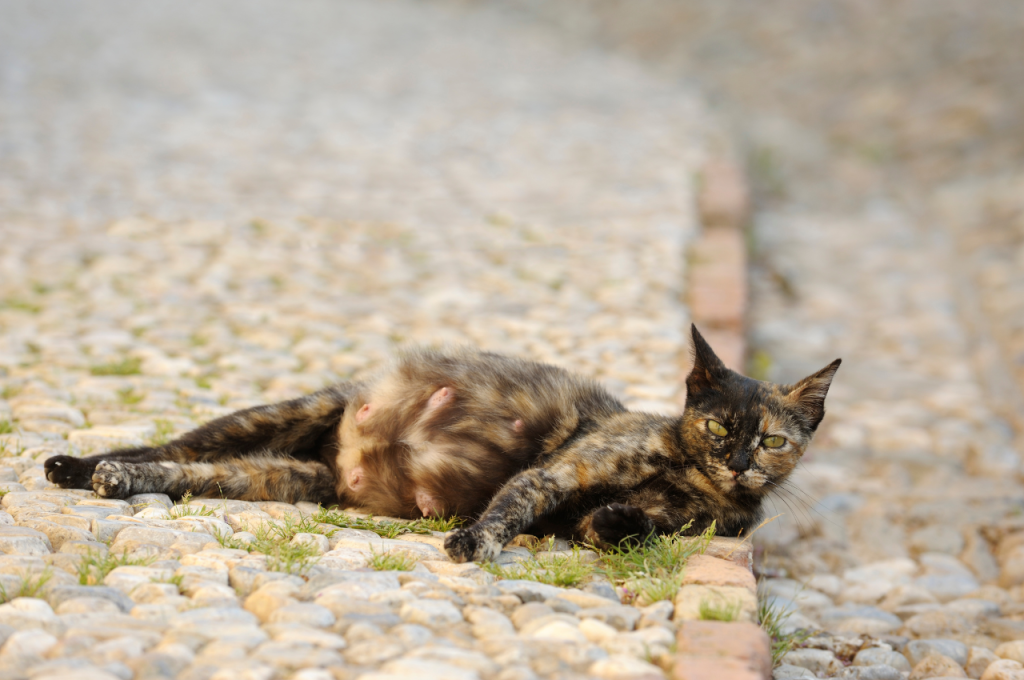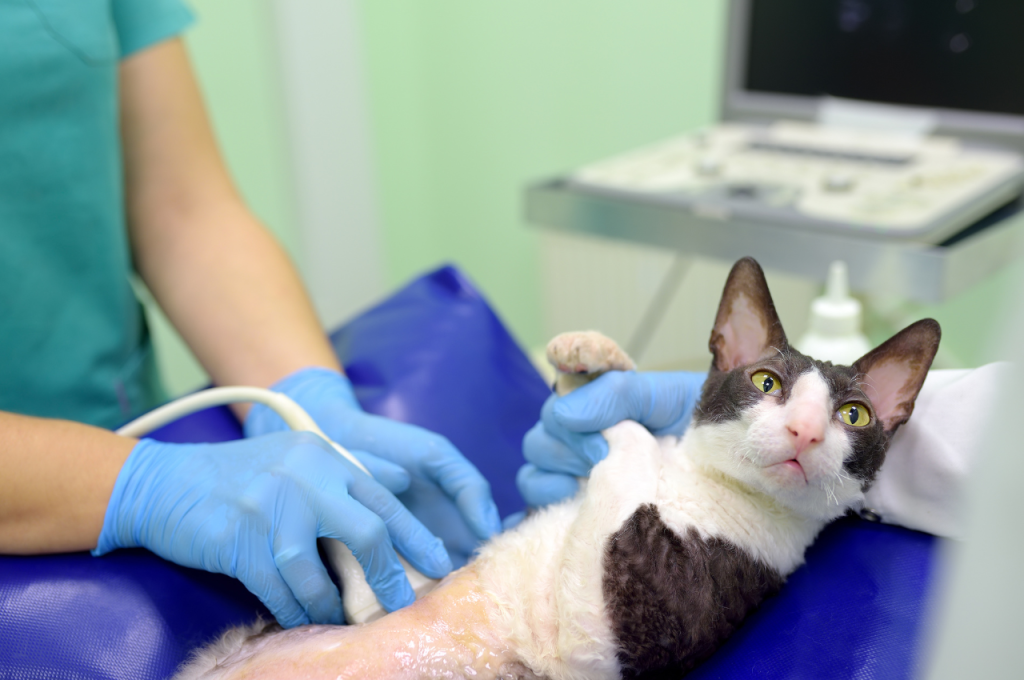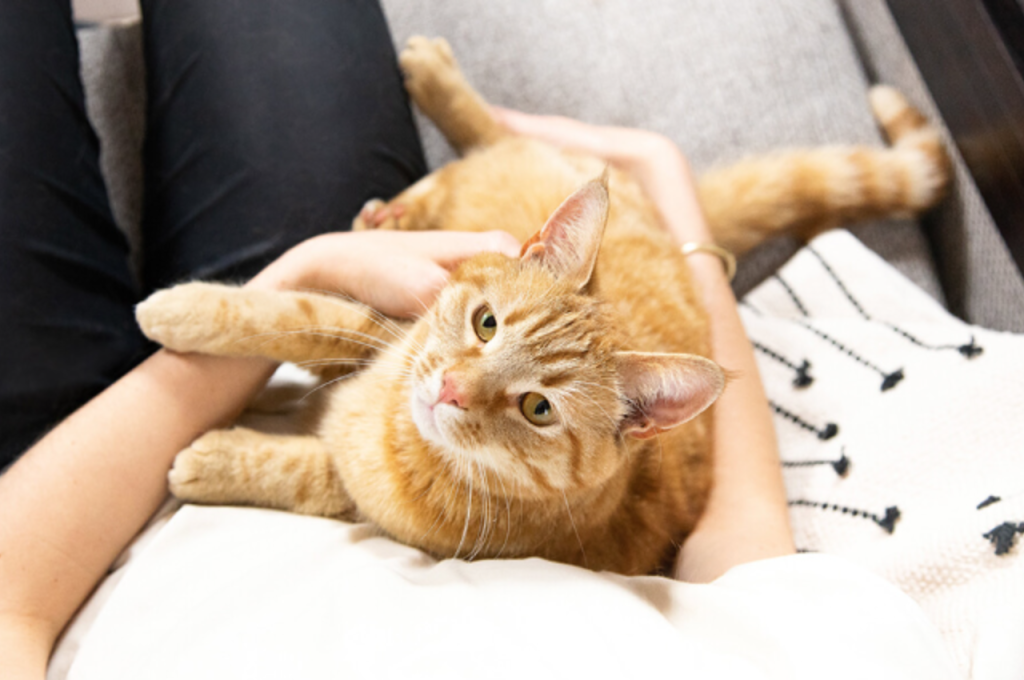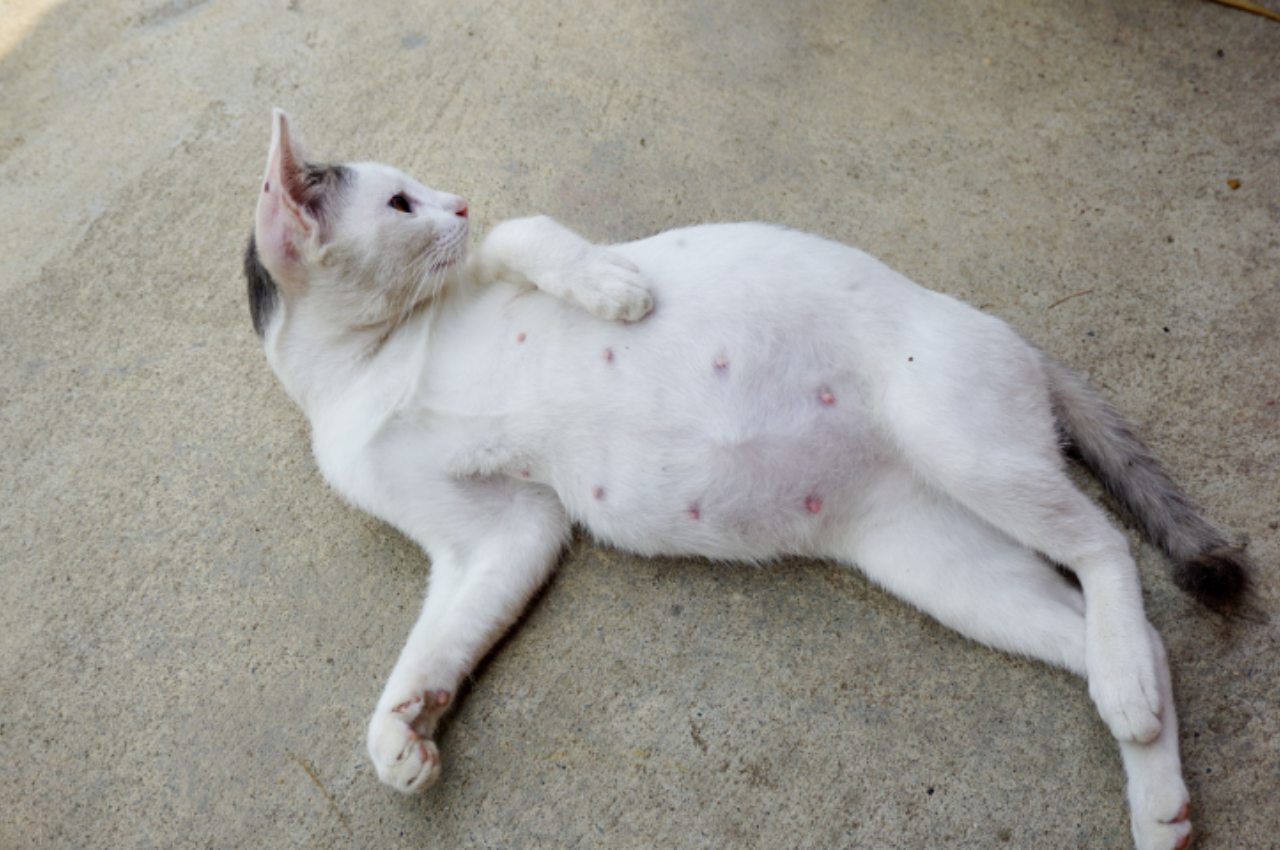You can tell your cat is about to give birth when she starts nesting and becomes restless. Watch for signs of labor like panting and seeking a quiet, secluded area.
Observing these behaviors can help you prepare for the arrival of adorable kittens. It’s an exciting time for both you and your furry friend as you anticipate the new additions to your family. By being attentive and supportive, you can ensure a smooth and safe delivery for your cat. Understanding the signs of impending labor will enable you to provide the care and assistance she needs during this special moment. Get ready to welcome the tiny bundles of joy into the world!
The Miracle of Feline Birth
The miracle of feline birth is a fascinating process. To tell if your cat is about to give birth, watch for signs such as nesting behavior, restlessness, and a drop in body temperature. Your cat may also become more vocal and affectionate, seeking comfort. She might also lose her appetite. Observing these signs can help you prepare for the arrival of new kittens, ensuring a safe and supportive environment for your cat during this special time.

Pre-labor Changes in Behavior
During the pre-labor phase, cats display several behavioral changes indicating impending birth. Signs include restlessness, nesting behavior (seeking quiet and secluded areas), increased grooming, and a decrease in appetite. Some cats may become more affectionate or seek their owner’s comfort. Monitoring these behaviors can help prepare for the imminent arrival of kittens.
Physical Signs of Impending Labor
As a cat nears labor, there are distinct physical signs to watch for. These include a drop in body temperature to around 99°F (37.2°C), restlessness, increased vocalization, and sometimes, a discharge from the vulva. The cat may also start to pant, pace, or appear anxious. These signs indicate that labor is imminent, and it’s essential to provide a quiet, comfortable space for the mother cat to give birth.
Behavioral Clues of Cat Labor
As a cat owner, it is important to be aware of the behavioral clues that indicate your cat is about to give birth. Understanding these signs can help you provide the necessary support and care during this crucial time. In this article, we will discuss two key behavioral clues to look out for nesting instincts and increased vocalization and affection.
Nesting Instincts
One of the most noticeable behavioral clues that your cat is about to give birth is the nesting instinct. As the due date approaches, you may observe your cat seeking out a quiet and secluded area to create a comfortable nest for her kittens. This can involve scratching and rearranging bedding, towels, or any soft materials she can find. It is important to provide a suitable nesting box or area with clean, warm bedding to accommodate her nesting instincts.
Increased Vocalization and Affection
Another behavioral clue of cat labor is an increase in vocalization and affection. As the contractions start, your cat may become more vocal than usual, meowing or purring in a different tone. She may seek extra attention and affection from you, rubbing against your legs or constantly wanting to be near you. This behavior is her way of seeking comfort and reassurance during the labor process.
It is important to note that every cat is different, and some may exhibit these behaviors more prominently than others. Additionally, some cats may show signs of anxiety or restlessness as labor approaches. These signs, along with the nesting instincts and increased vocalization and affection, can indicate that your cat is about to give birth.
By observing and understanding these behavioral clues, you can be better prepared to support your cat throughout the labor process. Providing a calm and comfortable environment, offering reassurance, and being ready to assist if necessary will help ensure a smooth and safe delivery for both your cat and her kittens.
Physical Indicators of Cat Labor
When your cat is about to give birth, there are several physical indicators that can help you recognize the signs of labor. By being aware of these indicators, you can provide the necessary support and care for your cat during this important time.
Drop-In Body Temperature
One of the key signs that your cat is about to go into labor is a drop in her body temperature. This drop is usually noticeable about 24 hours before she goes into labor. It is important to monitor her temperature regularly using a rectal thermometer, as this can help you predict when she is about to give birth.
Changes in Appetite
Another indicator of impending labor in cats is changes in appetite. Your cat may show a decreased interest in food as she gets closer to giving birth. On the other hand, some cats may display an increase in appetite just before labor begins. It is essential to observe your cat’s eating habits and consult your veterinarian if you notice any significant changes.
Predicting The Timing
Observing behavioral changes and physical signs can help you predict when your cat is about to give birth. Look out for nesting behaviors, decreased appetite, restlessness, and increased vocalization. Additionally, a drop in body temperature and the presence of milk in their nipples are good indicators that labor is imminent.
Gestation Period
Before we delve into predicting the timing of your cat’s labor, let’s first understand the gestation period of a pregnant cat. On average, a cat’s pregnancy lasts between 63 to 67 days. However, keep in mind that individual cats may have slightly shorter or longer gestation periods.
Vet Visits and Predictions
Regular visits to your veterinarian during your cat’s pregnancy can provide valuable insights into the timing of her labor. Your vet will be able to perform ultrasounds and palpations to determine the stage of pregnancy and estimate how far along your cat is. Additionally, they can help identify any potential complications that may affect the timing of the birth.

During these visits, your vet may also be able to predict the timing of your cat’s labor based on physical signs. They will look for specific changes in your cat’s body, such as her mammary glands becoming enlarged and the presence of milk. These changes usually occur a few days before labor begins.
Another helpful indication your vet may use to predict the timing is your cat’s body temperature. About 12 to 24 hours before labor, your cat’s body temperature will drop below 100°F (37.8°C). Monitoring her temperature regularly can give you a clue that labor is approaching.
It’s important to note that while vet visits and predictions can provide helpful information, each cat is unique, and there may be variations in the timing of labor. Paying close attention to your cat’s behavior and physical changes can also give you an idea of when she is about to give birth.
The Labor Process
As a responsible cat owner, it’s crucial to understand the labor signs to ensure your cat has a safe delivery. One of the most critical aspects is recognizing the stages and duration of feline labor.
Stages of Feline Labor
- First stage: Restlessness and nesting behavior
- Second stage: Contractions begin
- Third stage: Delivery of kittens
Duration of Cat Labor
Cat labor typically lasts 12-24 hours, but each stage can vary in duration. Contact a veterinarian if labor exceeds 24 hours.
Preparing for The Birth
Look for signs like restlessness, nesting behavior, and a decrease in appetite. Monitor her closely for any unusual behavior or vocalizations. Provide a quiet, safe space for her to give birth when the time comes. As a responsible cat owner, it’s crucial to know when your cat is about to give birth. The anticipation of new kittens can be both exciting and overwhelming. To ensure a smooth and successful delivery, it’s important to prepare a birthing area and have essential items on hand.
Setting up a Birthing Area
A quiet and secluded area in your home will make a perfect birthing spot. It’s important to choose a place that your cat feels comfortable in and has easy access to food, water, and a litter box. Additionally, make sure that the temperature is warm and comfortable for both your cat and her newborn kittens.
What to Have on Hand
When your cat is about to give birth, there are a few essential items you’ll need to have on hand. These include:
- Clean towels or soft blankets to provide warmth and comfort for the newborn kittens.
- Scissors to cut the umbilical cord.
- Sterilized string or dental floss to tie the umbilical cord.
- A heating pad or hot water bottle to keep the kittens warm.
- Aspiration bulb to suction mucus from the newborn kittens’ airways.
- Kitten milk replacer and a bottle in case the mother cat is unable to nurse.
- Latex gloves to assist with the delivery if necessary. It’s essential to have these items readily available before your cat goes into labor.
This way, you’ll be prepared for any unexpected situations that may arise during the delivery. In conclusion, by setting up a birthing area and having essential items on hand, you’ll be ready to assist your cat during the birthing process and ensure a successful delivery.
When to Intervene
As an attentive cat owner, it’s crucial to be aware of signs that may indicate complications during your cat’s delivery. By recognizing these signs early, you can ensure the well-being of both the mother and her kittens.
Signs of Complications
If your cat shows signs of distress, such as continuous pacing, excessive vocalization, or extreme lethargy, it could be an indication of complications. Additionally, abnormal vaginal discharge, prolonged labor, or repeated, unproductive straining are red flags that require immediate attention.
When to Call The Vet
If you notice any of the aforementioned signs or if your cat goes more than two hours between delivering kittens, it’s essential to contact your veterinarian without delay. Furthermore, if your cat exhibits signs of fever, refuses to eat, or seems unwell, seeking professional assistance is paramount to ensure the safety of the mother and her litter.
Post-birth Care
After the arrival of newborn kittens, it’s crucial to provide post-birth care to ensure the health and well-being of both the mother cat and her offspring. Knowing how to properly care for the newborn kittens and monitor the mother’s health is essential for a successful and stress-free transition into motherhood.

Caring for The Newborn Kittens
Caring for newborn kittens involves creating a warm and safe environment for them to thrive. This can be achieved by providing a comfortable nesting area away from drafts and loud noises. Additionally, ensuring that the kittens are nursing regularly and gaining weight steadily is vital for their health and development.
- Keep the nesting area warm and cozy
- Monitor the kittens’ weight gain and nursing habits
- Provide a quiet and peaceful environment
Monitoring The Mother’s Health
Monitoring the mother cat’s health is equally important to ensure she is recovering well from the birthing process. Observing her behavior and physical condition can help identify any potential health issues that may arise post-birth.
- Observe the mother cat for any signs of distress or discomfort
- Ensure she is eating and drinking regularly
- Keep the birthing area clean and free of potential hazards
Conclusion
Being able to recognize the signs that your cat is about to give birth is crucial for ensuring a smooth delivery. By observing her behavior, monitoring her physical changes, and providing a comfortable birthing environment, you can help your cat through this important milestone.
